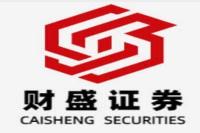Subaru's Indiana Gamble: Expanding US Production Amidst Trade Uncertainty – A Deep Dive into Automotive Manufacturing Strategy
Meta Description: Subaru's expansion plans in Indiana, US trade policy under the Trump administration, automotive manufacturing challenges, global supply chains, impact on the American auto industry, Subaru's future strategy.
Imagine this: The roar of the assembly line, the precise choreography of robotic arms, the satisfying clang of metal meeting metal – the heartbeat of American automotive manufacturing. Now, picture that heartbeat accelerating, fueled by a bold gamble from a surprising player: Subaru. With the incoming administration of President Trump promising a seismic shift in trade policy, Subaru, a company known for its all-wheel-drive prowess and fiercely loyal customer base, isn't shying away from the challenge. Instead, they're doubling down, considering a significant expansion of their Indiana assembly plant. This isn't just about adding cars to the road; it's a complex chess match involving global supply chains, fluctuating tariffs, and the very future of American manufacturing. This in-depth analysis will unpack the strategic implications of Subaru's decision, exploring the potential rewards and risks, and examining what this bold move means for the broader automotive landscape. We'll delve into the intricacies of global automotive manufacturing, exploring the factors that influenced Subaru’s decision, and what it could mean for consumers, employees, and the American economy as a whole. Get ready to buckle up for a fascinating ride into the heart of the automotive industry's shifting tectonic plates! We'll uncover the hidden intricacies of this decision, analyze the potential upsides and downsides, and look at the broader context of the automotive industry's evolving dynamics. So, are you ready to unravel the mystery behind Subaru's Indiana expansion? Let's dive in!
Subaru's Indiana Expansion: A Strategic Response to Trade Uncertainty
Subaru Corporation's announcement regarding potential expansion of its Indiana assembly plant is a fascinating case study in strategic corporate decision-making under conditions of significant uncertainty. President David O’Keefe’s statement regarding the consideration of increased production capacity comes at a pivotal moment. The incoming Trump administration's protectionist trade policies, particularly the threat of increased import tariffs, cast a long shadow over the global automotive industry. This isn't just about increased costs; it's about the potential disruption of established supply chains and the need for manufacturers to adapt quickly.
Subaru’s decision, while seemingly bold, is actually a calculated risk based on several key factors:
-
Mitigation of Tariff Risks: By increasing domestic production, Subaru can potentially mitigate the impact of increased import tariffs on vehicles manufactured overseas. This reduces the vulnerability to fluctuating trade policies and gives them a degree of control over pricing.
-
Enhanced Supply Chain Resilience: Expanding production in Indiana strengthens Subaru’s supply chain resilience. By reducing reliance on imported components and vehicles, they lessen their vulnerability to geopolitical instability and supply chain disruptions. This is particularly crucial given recent global events that have highlighted the fragility of international supply chains.
-
Strengthened Market Position: Increased production capacity allows Subaru to meet growing demand in the North American market without being constrained by import limitations. This is crucial for maintaining market share and brand visibility.
-
Positive Public Relations: Investing in American manufacturing projects a positive image, appealing to consumers who favor domestically produced goods and companies that show commitment to the American workforce. This is a powerful tool in a competitive marketplace.
However, this decision isn't without its risks:
-
Increased Capital Investment: Expanding the Indiana plant requires significant upfront capital investment in new equipment, facilities, and potentially hiring additional workers. This carries inherent financial risks.
-
Economic Fluctuations: The US economy is subject to cyclical fluctuations. A downturn could negatively impact demand, leaving Subaru with excess capacity and higher fixed costs.
-
Labor Relations: Successful expansion hinges on maintaining positive labor relations. Any labor disputes could disrupt production and negatively impact profitability.
-
Unforeseen Geopolitical Events: Despite the attempt to mitigate risk, unexpected geopolitical events could still negatively impact the business and the profitability of the expansion.
The Broader Automotive Landscape: A Shifting Paradigm
Subaru's decision highlights a broader shift in the global automotive industry. The era of relatively free and unfettered global trade is arguably coming to an end. The automotive sector, historically reliant on complex global supply chains, is now facing increased pressure to regionalize production. This trend is driven not just by trade policy but also by factors like:
-
Rising Labor Costs in Traditional Manufacturing Hubs: The cost of labor in countries like China and Mexico is increasing, making it less advantageous to manufacture there compared to locations with similar infrastructure but potentially lower labor costs.
-
Geopolitical Instability: Global events underscore the risks associated with relying on single-source suppliers or manufacturing bases located in politically unstable regions. Diversification of production becomes a paramount concern.
-
Environmental Concerns and Regulations: Growing environmental consciousness is leading to stricter emission regulations, pushing manufacturers to invest in new technologies and potentially altering manufacturing processes, increasing the need for local production to be closer to regulation centers.
-
Consumer Preferences: Consumer preferences are evolving, with a growing emphasis on sustainable and environmentally friendly vehicles. This shifts the focus towards environmentally conscious local manufacturing processes.
This forces manufacturers to re-evaluate their global strategies, focusing on regional hubs and diversification of production and supply chains. Subaru’s move, therefore, isn't an isolated incident but a reflection of a broader industry-wide adaptation to a new reality.
Analyzing Subaru's Success Factors
Subaru's success in the US market, even before this expansion, stems from a unique combination of factors:
-
All-Wheel Drive Prowess: Subaru's reputation for reliable all-wheel-drive systems resonates strongly in areas with challenging weather conditions, a key selling point for many consumers.
-
Strong Brand Loyalty: Subaru has cultivated a fiercely loyal customer base, known for their commitment to the brand and its values.
-
Effective Marketing: Subaru's marketing campaigns have effectively targeted specific demographics, successfully building brand awareness and preference.
-
Quality and Reliability: Subaru vehicles are generally perceived as reliable and durable, which significantly impacts consumer decisions.
This expansion is a strategic move to capitalize on these existing strengths, expanding their production capacity to meet the growing demand while mitigating external risks.
Frequently Asked Questions (FAQs)
Q1: Will this expansion lead to job creation in Indiana?
A1: Yes, the expansion is highly likely to create significant new jobs in Indiana, both directly in the assembly plant and indirectly in related industries supplying components and services.
Q2: How will this expansion impact Subaru's pricing?
A2: The impact on pricing is complex. While increased domestic production could mitigate some tariff-related cost increases, other factors like raw material costs and labor expenses will also play a role. Prices could remain stable, potentially decrease slightly, or potentially increase slightly depending on the balance of these factors.
Q3: What are the potential environmental implications of this expansion?
A3: Subaru will need to carefully consider the environmental impact of its expansion, ensuring compliance with environmental regulations and possibly investing in sustainable manufacturing practices to minimize its carbon footprint.
Q4: How does this expansion compare to other automakers' strategies?
A4: Many other automakers are also adjusting their production strategies in response to changing trade policies and economic conditions. However, Subaru's focus on a significant expansion in a single location reflects its unique commitment to the North American market.
Q5: What are the risks associated with this expansion?
A5: The risks include potential economic downturns affecting demand, unexpected disruptions to supply chains, and the need for significant capital investment. However, these risks are carefully managed via strategic planning and risk mitigation efforts.
Q6: What is Subaru’s long-term vision with this expansion?
A6: Subaru’s long-term vision with this expansion is to solidify their position in the North American market, mitigate risks associated with fluctuating trade policies, and strengthen their supply chain resilience. This positions them for future growth and adaptability in an increasingly complex global automotive landscape.
Conclusion: A Calculated Gamble with High Stakes
Subaru's decision to potentially expand its Indiana assembly plant is a calculated gamble with high stakes. It reflects a proactive response to evolving trade policies and a broader shift in the global automotive industry. While there are significant risks involved, the potential rewards—enhanced market position, mitigated tariff risks, and strengthened supply chain resilience—make this a strategically sound move. The success of this venture will depend on a range of factors, including effective management, positive labor relations, and continued consumer demand. However, Subaru’s history of robust engineering, keen market understanding, and proven reliability suggests that they are well-positioned to navigate these challenges and emerge stronger. The automotive world watches with bated breath, eager to see if this bold strategy will pay off. The coming years will undoubtedly offer fascinating insights into the future of automotive manufacturing and Subaru’s role within it.



